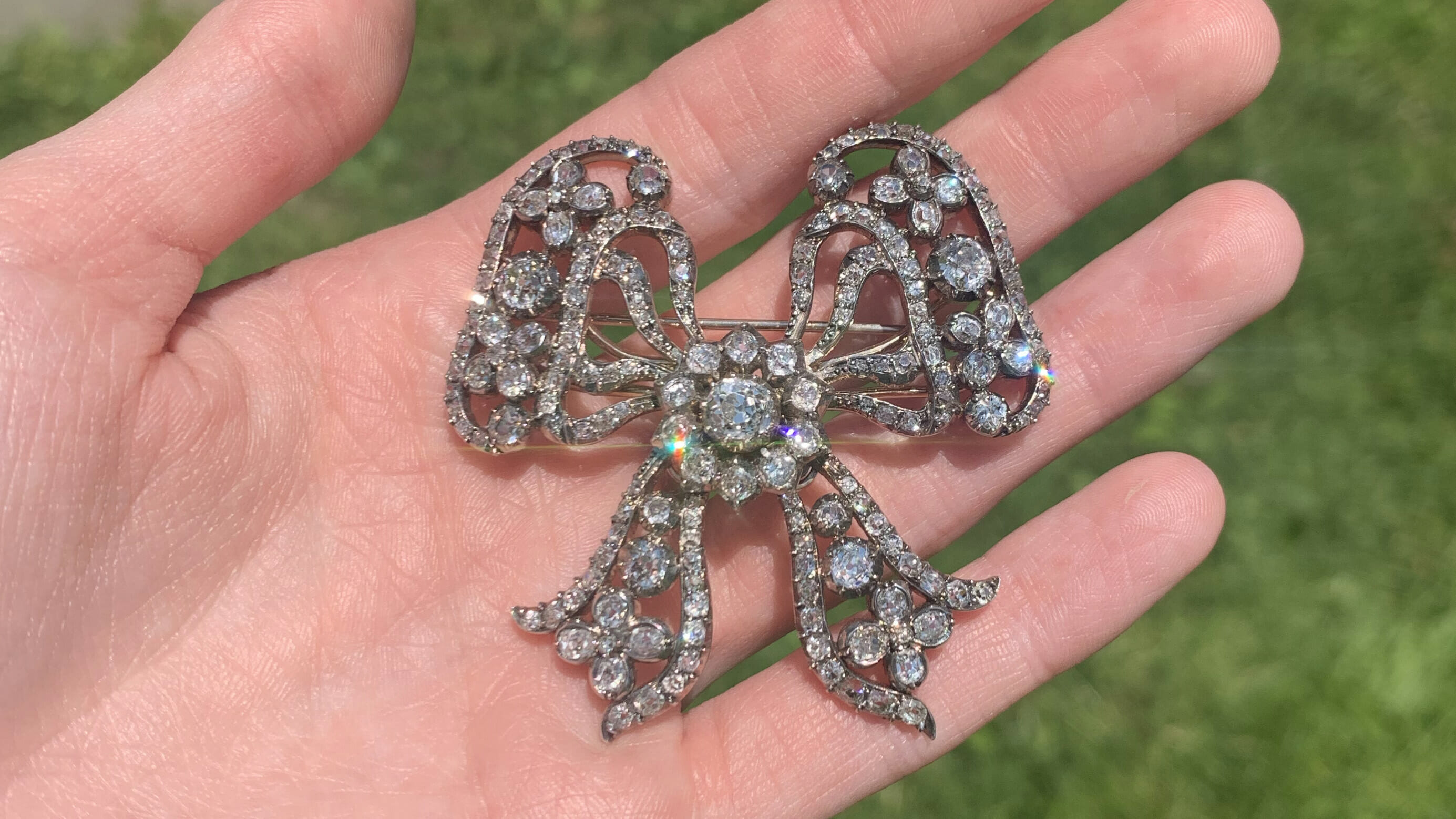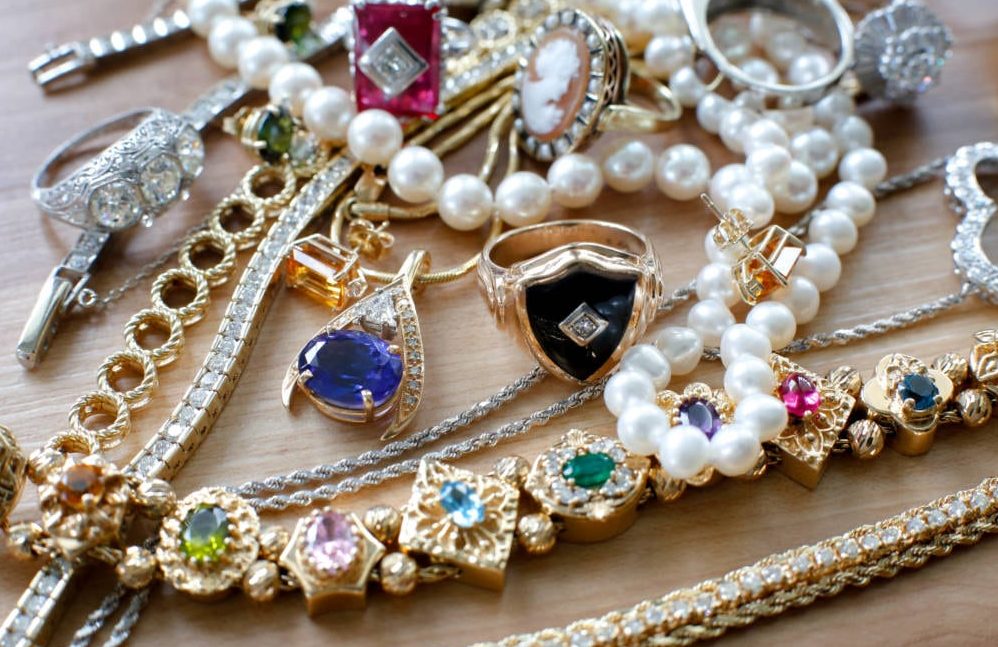Discover handpicked antique jewelry austin in top stores.
Revealing the Allure of Vintage Fashion Jewelry: Understanding Its Various Designs
Vintage jewelry functions as a fascinating home window into the past, offering understandings into the cultural and imaginative nuances of numerous periods. Each style, from the stirring ins and outs of Victorian jewelry to the fluid sophistication of Art Nouveau, encapsulates the sentiments and advancements of its time. The succeeding opulence of Edwardian styles and the striking kinds of Art Deco additionally highlight this development. Yet, as we explore these unique styles, one have to consider exactly how the relevance of these pieces transcends simple aesthetics, inviting a much deeper evaluation of their historic and emotional resonance.
Victorian Age Precious Jewelry
The allure of Victorian Era jewelry depends on its detailed workmanship and extensive symbolism, reflecting the social values and psychological currents of the moment. Covering from 1837 to 1901, this duration was identified by an attraction with nature, mourning, and romanticism, which profoundly influenced precious jewelry layout. Jewelry pieces frequently included fancy themes, such as blossoms, animals, and complex filigree work, crafted from products like gold, silver, and gemstones.

Additionally, the technological advancements of the Industrial Change permitted more complex layouts and making use of new materials, such as diamonds and pearls. This democratization of deluxe made precious jewelry more accessible to the middle course, causing a spreading of varied styles. Generally, Victorian Period jewelry continues to be an exciting testimony to the complicated interaction of art, emotion, and social norms throughout a transformative historic duration.
Art Nouveau Creations
Defined by its organic forms and streaming lines, Art Nouveau precious jewelry emerged in the late 19th and very early 20th centuries as a reaction to the automation and stiff designs of the coming before periods. This creative motion sought to welcome nature, incorporating components such as blossoms, leaves, and creeping plants right into the styles. Art Nouveau pieces commonly included asymmetrical compositions, emphasizing a feeling of activity and fluidity.

Using ingenious strategies, such as enameling and the consolidation of glass, further distinguished Art Nouveau jewelry from its predecessors. The movement inevitably commemorated uniqueness and imaginative expression, making each piece a distinct job of art. As a result, Art Nouveau productions remain to astound collection agencies today, embodying an unique mix of sophistication and nature that remains classic.
Edwardian Duration Parts
Throughout the very early 20th century, the Edwardian duration observed an exceptional development in fashion jewelry design, marked by a focus on style and opulence. This period, named after King Edward VII, extended from 1901 to 1910 and is characterized by the elaborate workmanship and delicate aesthetic appeals that specify its items.
Precious jewelry from this duration often features platinum settings, a product that enabled finer and even more intricate layouts, boosting the play of light against the gems. The use of rubies prevailed, typically organized in fancy themes such as lacework and floral patterns. Edwardian precious jewelry also welcomed the usage of pearls, which added a soft, luminescent top i loved this quality to the pieces.
Breastpins, lockets, and earrings became prominent, showcasing the era's penchant for charming and wayward designs. straight from the source The "garland style," which included making use of ribbon-like themes, was particularly popular, mirroring the naturalistic influences of the moment. Furthermore, items often incorporated colored gemstones to produce striking contrasts, more raising their visual charm. Generally, Edwardian duration precious jewelry continues to be a testimony to a time when virtuosity and refinement ruled supreme worldwide of accessory.

Art Deco Designs
Arising in the 1920s and thriving through the 1930s, Art Deco develops stand for a strong departure from the luxuriant designs of previous eras, embracing geometric forms, structured types, and lively colors. Identified by a sense of modernity, this design activity attracted ideas from various sources, consisting of cubism, old Egyptian themes, and the vibrant looks of the equipment age.
Art Deco fashion jewelry often features strong contrasts, integrating products such as platinum, gold, and tinted gemstones to create striking visual impacts. Making use of elaborate patterns and themes, consisting of zigzags, chevrons, and floral aspects, showcases the workmanship of the time. Significantly, the period also saw the intro of brand-new techniques such as enamel work and the usage of synthetic rocks, broadening the opportunities for innovative expression.
Parts from this period frequently show beauty and elegance, making them very searched for by enthusiasts and enthusiasts alike. Art Deco precious jewelry serves not just as a reflection of its time but additionally as a testimony to the long-lasting appeal of its ingenious layouts. As such, it holds a considerable place in the history of antique fashion jewelry, commemorated for its distinct design and cultural value.
Retro and Mid-Century Styles
Retro and Mid-Century designs, extending from the 1940s to the 1960s, stand for a lively period in fashion jewelry layout that reflects the optimism and advancement of post-war society. antique jewelry. Characterized by strong layouts and the use of innovative products, this period saw a websites separation from the complex detailing of previous styles, welcoming instead a more spirited and abundant visual
Jewelry from this period commonly includes huge, vibrant gems, including citrine, aquamarine, and tourmaline, established in yellow gold-- a product that obtained prestige because of its warm tones and malleability. The styles often included wayward motifs such as floral patterns, abstract kinds, and geometric forms, recording the spirit of modernity and freedom that specified the age.
Significant designers like Cartier and Van Cleef & Arpels made considerable payments to Retro and Mid-Century styles, developing pieces that integrated workmanship with artistic style. The impact of Hollywood appeal during this time led to an increased demand for statement precious jewelry, making it a vital device for the stylish elite. Collecting Retro and Mid-Century fashion jewelry today offers fanatics a glimpse into a transformative duration in history, identified by creative thinking and cultural development
Conclusion
The expedition of antique jewelry exposes a vivid range of designs, each symbolizing the social and artistic subtleties of its respective era. From the emotional deepness of Victorian designs to the innovative spirit of Retro items, these artefacts function as vital historic stories. Understanding the distinct qualities of each duration boosts appreciation for the craftsmanship and relevance behind these accessories, solidifying their status as not only attractive things yet additionally useful links to the past.